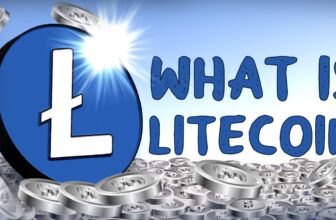
As blockchain technology proliferates, asset transfers between the growing array of networks emerge as a crucial capability for Web3’s next evolution phase. Yet rigid boundaries still separate major ecosystems like Ethereum, BNB Chain and Polygon, limiting seamless interaction.
Defiway has positioned itself at the forefront of blockchain interoperability through an array of bridging solutions connecting assets, data and applications across isolated chains. By enhancing cross-chain capital efficiency and utility, Defiway aims to unlock decentralized finance’s (DeFi) full potential.
The following analysis highlights key reasons why Defiway dominates the cross-chain bridge vertical today as the leading interconnectivity platform.
Table of Contents
Solving Core User Frictions

Source: portotheme.com
Defiway focuses sharply on resolving end-user problems above chasing experimental technologies. The team targets three core friction areas for innovations:
- Platform isolation barriers inhibiting asset transfers
- Capital inefficiencies from fragmented liquidity
- Trading complexities across separate ecosystems
Defiway systematically builds infrastructure addressing each pain point. Specialized bridges relay assets across alienated platforms, removing access barriers. Consolidated trading and swapping protocols like Defiway Swap enhance capital efficiency via unified DEX aggregation. And simplified staking expands user incentives by syndicating tokenomics.
This solutions-based approach spotlights specific bottlenecks curbing DeFi growth. By streamlining cross-chain transactions, asset management and operations, Defiway unlocks real user value beyond technical novelty. The laser focus on addressing core friction has been crucial for its breakout success.
Institutional-Grade Reliability Infrastructure
In the blockchain bridge sector prone to vulnerabilities like Wormhole’s $325 million hack, maintaining reliability and security represents a formidable business challenge requiring long-term commitment.
Defiway bridges implement comprehensive security models aligned with institutional precautions to establish operational trust. Starting from the 80% of team members possessing cybersecurity backgrounds from companies like Visa and IBM Cloud, the project brings enterprise-grade talent.
Defiway’s modular Smart Contract and Oracle architecture undergoes recurring external audits from Ethereum auditors Quantstamp and Certik, both founded by former Google engineers. Live penetration testing combined with post-launch bug bounties further strengthens reliability.
For partners like crypto lending protocol Spool needing trusted fund transfer mechanisms, Defiway’s institutional-grade reliability minimized business risks associated with hacks. This cements Defway’s reputation as the go-to player.
Positioned for Web3’s Convergence

Source: wazirx.com
Unlike niche bridges tailored to specific blockchain tribes, Defiway develops agnostic tools designed for interoperability across major ecosystems.
In 2022, Defiway launched modular bridges already supporting transfer across Ethereum, BNB Chain, Polygon and the multichannel Optimism chains. Compatibility improvements underway for Cardano, Solana and alternative smart contract platforms demonstrate the connectivity focus carrying the project forward.
This blockchain-agnostic outlook aligns with the big picture vision of an integrated Web3 environment compositing the capabilities of diverse solutions from enterprise chains to high transaction networks. Defiway’s positioning at the center of this converging landscape gives the project enormous growth potential as the crucial exchange bridging next-generation DeFi.
The interoperable tool design combined with the project’s maturity makes Defiway primed to fulfill the bridging needs of Web3’s technology convergence over the coming years.
Economic Sustainability through $DFI Tokenomics

Source: journaldugeek.com
The $DFI token follows a fair distribution model with only 25% towards founders and 50% directed towards the community-owned Defiway DAO supporting ongoing growth. This curtails excessive founder pre-allocations causing downstream dilution seen in many projects.
$DFI tokenomics also incentivize value creation by economically connecting ecosystem protocols from NFT marketplace Objets d’Art to multi-chain swapping on Defiway Swap. Fees from integrated applications contribute towards the decentralized treasury, creating sustainable funding for ecosystem expansion, marketing and technology R&D.
Active $DFI circulation expands with ecosystem usage, organically benefiting investors without secondary inflationary events. $DFI price consequently correlates with Defiway’s rise, aligning network incentives around collaboration.
This cyclical growth design leverages constructive tokenomics for overcoming blockchain’s scaled monetization barriers, driving towards exponential network effects.
Conclusion
Within three years, Defiway demonstrated how solutions-focused execution bridging DeFi across chains leads to landscape changing technologies powering a converged ecosystem future. After cementing cross-chain reliability and usability milestones, Defiway now prepares for expanding possibilities like the upcoming Defiverse initiative intersecting metaverse, blockchain and connectivity.
With Defiway firmly established as the leading decentralized bridge operator, the project approaches escape velocity for powering and benefiting from mainstream decentralized finance growth. Its commitment to resolving end-user problems through an expanding technology stack should see DeFiway continue pioneering Web3 interoperability for the long run.







